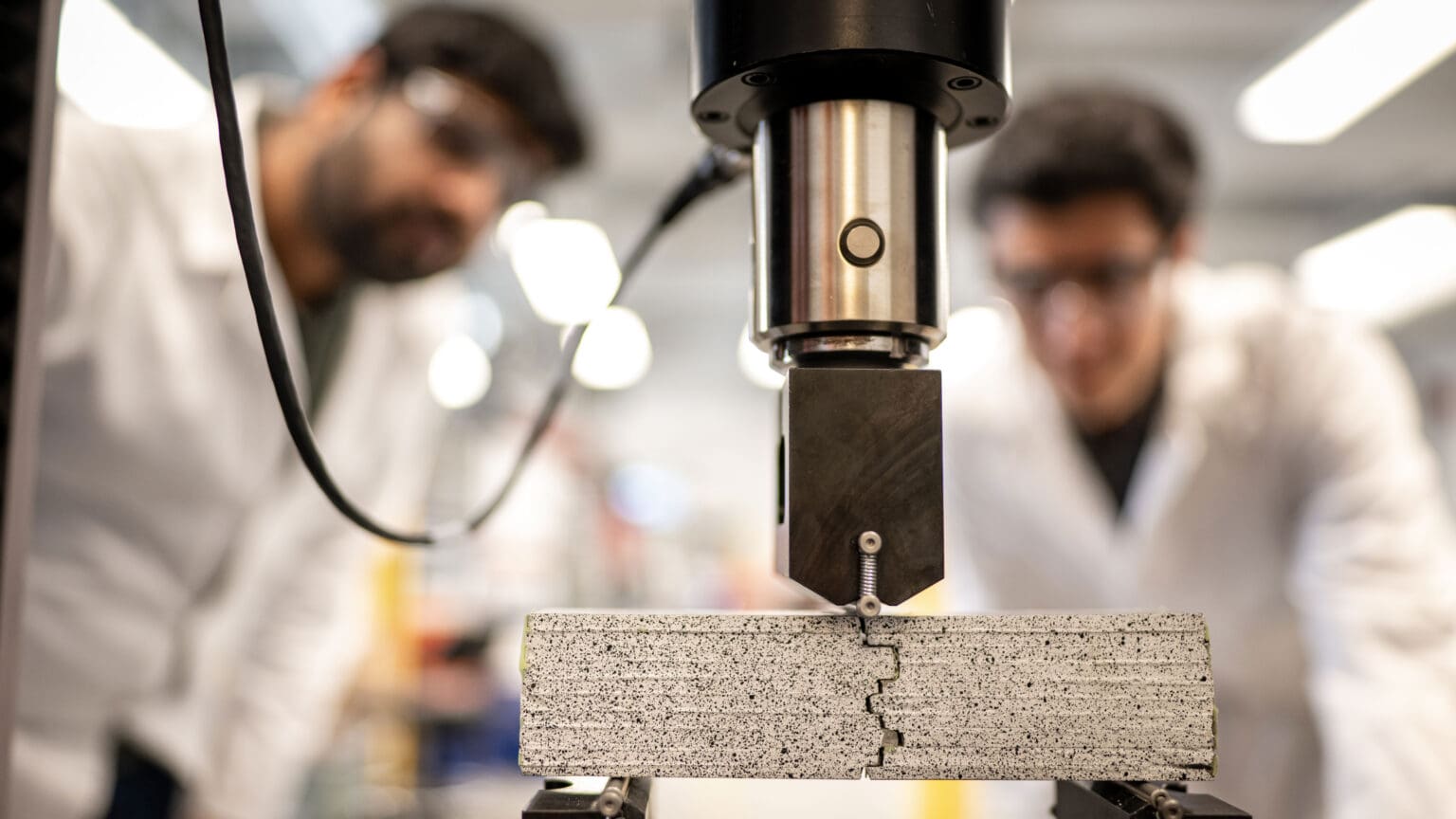Inspired by the material found in oyster shells and abalone, engineers at Princeton have created a new cement composite that is 17 times stronger against cracks than standard cement and 19 times more capable of stretching and deforming without breaking. The findings could help increase crack resistance in a wide range of brittle ceramic materials, from concrete to porcelain.
“If we can engineer concrete to resist crack propagation, we can make it tougher, safer and more durable,” said researcher Shashank Gupta, a graduate student in Professor Reza Moini’s laboratory in the Department of Civil and Environmental Engineering.

In an article published on June 10 in the journal Advanced Functional Materials, the research team led by Assistant Professor of Civil and Environmental Engineering reported that creating alternating layers of tabulated cement paste and thin polymer can significantly increase crack resistance and ability to deform without completely breaking (ductility).
Moini’s lab often seeks inspiration in biology for their work on construction materials. In this case, the team developed a composite inspired by a natural material called nacre or mother-of-pearl, found within certain shells. As per Shashank Gupta, “at the microscopic level, nacre consists of hexagonal tablets of the hard mineral aragonite glued together by a soft biopolymer.”

The aragonite tablets significantly contribute to the strength of nacre, while the biopolymer adds flexibility and crack resistance. The hardening mechanism involves the aragonite tablets sliding under tension, which, along with other mechanisms, allows nacre to dissipate energy. This sliding action, combined with crack deflection and deformation of the biopolymer, allows nacre to withstand substantial mechanical stress while maintaining its structural integrity, making it strong and resilient.
“This synergy between hard and soft components is crucial for the remarkable mechanical properties of nacre,” stated Gupta.
The team managed to develop innovative nacre-inspired composites using conventional building materials like Portland cement paste combined with a limited amount of polymer. They alternated layers of cement paste sheets with a highly stretchable polymer, polyvinylsiloxane. The researchers created small beams of several layers by alternating sheets of cement paste with thin polymer layers. These beams were then subjected to a three-point bending test with notches, where each beam was tested under bending to evaluate crack resistance (or fracture toughness).
Similar Posts
In the experiment, the researchers produced three types of beams. The first type consisted of alternating layers of cement paste sheets and fine polymers. For the second type, they used a laser to engrave hexagonal grooves in the cement paste sheets. These grooved sheets were then stacked with thin polymer layers between them.
The third type was similar to the second, but the researchers completely cut the cement, creating separate hexagonal tablets connected by the polymer layer. These cement paste tablets rest on the polymer layer in the same way that aragonite rests on the biopolymer layer in nacre. “These three types were compared against a reference solid (monolithic) cast cement paste counterpart,” was noted in the press release by Princeton.
The experiments revealed that the failure of the reference beams was brittle, meaning the beams suddenly and completely broke upon reaching their failure point, without ductility. The beams with alternating layers, both grooved and non-grooved, demonstrated greater ductility and crack resistance.
The results observed in the beams with completely separated hexagonal tablets were similar to nacre. These beams exhibited 19 times more ductility and 17 times more fracture toughness while retaining nearly the same strength as the solid cement paste beam.
“We are only scratching the surface; there will be numerous design possibilities to explore and engineer the constitutive hard and soft material properties, the interfaces, and the geometric aspects that play into the fundamental size effects in construction materials,” concluded Moini.


















